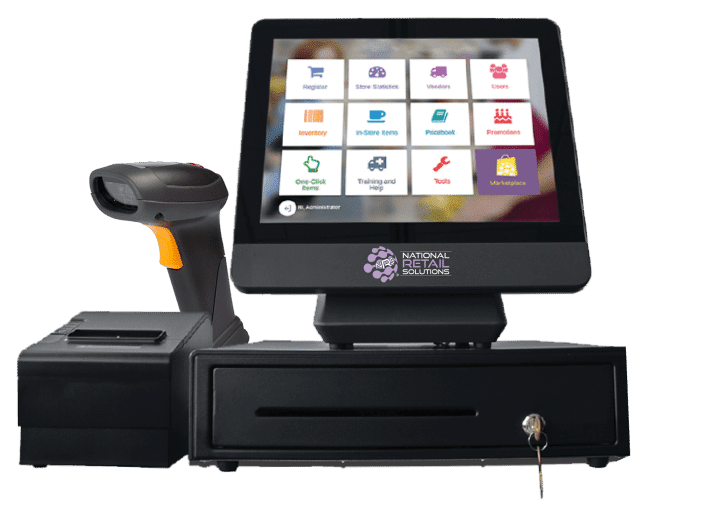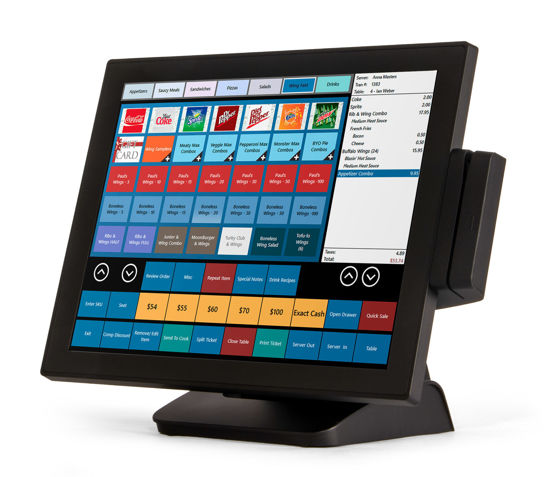Point Of Sale Things To Know Before You Get This
Restaurant POS : The Point-Of-Sale System Streamlines Checkout Processes Efficiently
Unpacking the Power Behind Point of Sale Systems
Have you ever paused to consider what happens the moment you swipe your card or tap your phone at a checkout? That flash triggers a cascade of procedures, managed by sophisticated Point of Sale Systems. Far from being simple sales register, these systems function as the digital heartbeat of retail operations, weaving together sales information, inventory, and customer interaction.
Think of a busy coffee shop where the barista handles orders, payments, and commitment benefits simultaneously. The POS system isn't simply a tool-- it's the unseen partner guaranteeing every coffee is represented, every discount applied correctly, and every client leaves satisfied. POS Software. It's the difference in between chaos and smooth service
Core Functions That Drive Efficiency
- Sales Deal Management: Tracks each purchase with accuracy, making sure precision in billing and receipts.
- Inventory Control: Automatically updates stock levels, signaling when it's time to reorder.
- Consumer Information Collection: Gathers insights for individualized marketing and commitment programs.
- Worker Monitoring: Schedules shifts and records hours worked.
Why Does This Matter?
Consider the last time you waited in a long checkout line. Discouraging, best? A well-implemented POS system slashes wait times by improving payment processes, lowering human error, and syncing sales with backend operations in real-time. It's like having a conductor directing every note in the symphony of retail.
| Function | Benefit | Effect |
|---|---|---|
| Real-Time Analytics | Immediate sales reporting | Better decision making |
| Mobile Compatibility | Checkout anywhere | Boosted client experience |
| Integrated Payments | Multiple payment alternatives | Increased sales opportunities |
Doesn't it make you question how businesses ever handled without these systems? In a world where every second counts, the POS is no longer simply a convenience-- it's a requirement.
Decoding the Celestial Puzzle
When peering into the night sky, have you ever wondered how ancient mariners identified their place without contemporary technology? Positional astronomy is the art and science behind that celestial navigation. Why does comprehending the exact position of stars and worlds matter? Since even a minute miscalculation can send you miles off course, particularly when depending on the stars as your compass.
The Subtle Intricacies of Coordinate Systems
One might believe the sky is an easy canvas, however it's a dynamic sphere dotted with moving targets. The equatorial coordinate system. POS Machine-- best ascension and declination-- mimics Earth's own location, however with a twist. The Earth's axis wobbles, a phenomenon called precession, which subtly shifts star positions over decades. This demands continuous recalibration. Have you ever discovered how Polaris does not always sit precisely at the North Celestial Pole? That's precession at work
Tips from the Observatory
- Utilize a high-precision chronometer to measure sidereal time properly; even seconds matter.
- Calibrate your instruments regularly to account for atmospheric refraction, especially near the horizon.
- Cross-check star catalogs-- various epochs can yield varying coordinates.
- Utilize software application that factors in nutation and aberration for contemporary precision.
Astounding Anecdote
Think about the tale of a 16th-century navigator who, using rudimentary tools and naked-eye observations, calculated his ship's position with unexpected accuracy. His secret? Mastery of celestial mechanics and a deep understanding that the stars, though relatively repaired, belong to a cosmic dance.
Accuracy Needs Perseverance
Trying to identify a star without thinking about climatic distortion resembles trying to check out a book through a frosted window. Even the best telescopes can be tricked by the atmosphere's unpredictable layers. Persistence, numerous observations, and averaging results often reveal the true positional information. Isn't it fascinating how the sky's apparent stillness masks such elaborate shifts?

Translating the Essence of Positive Operator-Valued Procedures
Envision trying to capture a shadow's true shape in a world where light bends unexpectedly. Favorable Operator-Valued Measures (POVMs) perform a similar feat in quantum mechanics-- determining states where classical intuition stops working. Unlike the cool sharpness of projective measurements, POVMs allow a richer tapestry of results, weaving probabilities from operators that aren't necessarily orthogonal. Why go for the mundane when you can paint with the complete palette of quantum possibilities?
Quantum Measurement Beyond Standard Limits
Conventional measurements feel rigid, however POVMs offer flexibility. In practice, they emerge from coupling a system with an ancilla, then performing projective measurements on the combined system. This method extends the horizon of what can be observed. Ever questioned how to optimize information extraction without troubling delicate quantum states? POVMs are the secret.
- Non-orthogonality: Unlike projectors, POVM aspects overlap, enabling nuanced detection methods.
- Completeness: The sum of all POVM aspects equates to the identity operator, ensuring overall probability.
- Physical Realizability: Any POVM can be implemented through Neumark's dilation theorem, linking abstract math to laboratory experiments.
Specialist Tips for Navigating POVM Execution
Dealing with POVMs in practice isn't insignificant. Quantum sound and decoherence sneakily distort your ideal operators. To combat this:
- Design POVMs customized to your speculative setup-- modification beats one-size-fits-all each time.
- Use convex optimization algorithms to discover the optimum POVM that takes full advantage of info gain for your quantum state discrimination task.
- Remember, the subtle interaction in between operator positivity and measurement efficiency governs the trade-off in between precision and disruption.
Unseen Intricacies in POVM Applications
What does it indicate when a POVM element is favorable however not a projector? This subtlety often astonishes beginners but reveals a profound reality: quantum measurements do not need to be sharp to be informative. In cryptographic procedures, for circumstances, using POVMs rather of projective measurements can improve security by drawing out details more carefully, leaving less traceable disturbance.
| Function | Projective Measurement | POVM |
|---|---|---|
| Operator Type | Orthogonal Projectors | Positive Semidefinite Operators |
| Measurement Results | Fixed, sharp | Flexible, probabilistic |
| Application | Direct on system | Needs supplementary systems |
| Info Extraction | Sometimes minimal | Optimizable and richer |
Understanding the Intricacies of Evidence of Stake
Think of a world where blockchain validators do not race to fix puzzles however instead stake their properties, signaling trust and dedication. This is the essence of the Evidence of Stake (PoS) system. Yet, below its classy surface lies an intricate dance of rewards and security procedures. Why does website staking more tokens increase your opportunity to verify the next block? Due to the fact that it lines up economic incentives, making attempts to defraud the network prohibitively costly.
The Subtle Risks of Stake Centralization
One might ask: could a handful of stakeholders subdue a network? The concentration of staked tokens in few hands might skew the decentralization perfect, leading to oligarchic control over block production. This isn't simply theoretical; it's a real tension in PoS systems. Effective networks combat this by executing mechanisms such as:
- Slashing conditions that punish destructive stars by taking staked tokens
- Randomized validator selection to prevent predictability
- Delegated staking models permitting token holders to delegate others without giving up ownership
Specialist Suggestion: Timing Your Stake
Seasoned validators understand that timing can be everything. Joining the staking swimming pool too early or late can affect benefits significantly. Network dates define windows where staking and validation take place-- missing out on these could mean forfeiting made rewards. Constantly integrate your staking activity with the network's epoch schedule to make the most of yield.
Energy Performance and Security: A Delicate Balance

| Element | Proof of Stake | Evidence of Work |
|---|---|---|
| Energy Usage | Minimal, sustainable | High, resource-intensive |
| Attack Expense | Stake loss, financial disincentive | Pricey hardware and electrical energy |
| Block Finality | Faster due to economic locks | Slower due to probabilistic verification |
Rethinking Security Assumptions
One frequently ignored element is the "absolutely nothing at stake" problem. Validators might be tempted to sign several contending chains, offered that it costs them nothing directly-- unlike Evidence of Work where energy expense deters this. Advanced PoS systems resolve this with charges and checkpointing, making sure validators stake their reputation as much as their tokens. Have you thought about how this effects your rely on a network?
Point of Sale Solutions in North Carolina
North Carolina is a dynamic state known for its varied economy and rich cultural heritage. With a population surpassing 10 million, it boasts prospering metropolitan centers such as Charlotte and Raleigh, which are centers for financing, innovation, and education. Visitors and citizens take pleasure in destinations like heaven Ridge Mountains, historical websites in Asheville, and the lovely Atlantic coastline. The state likewise has a strong entrepreneurial spirit, making it a perfect environment for organizations to adopt effective point of sale systems to streamline operations and enhance consumer experiences.
For professional suggestions and a complimentary consultation on point of sale options, reach out to Brilliant POS. They offer well-informed assistance customized to your particular company requirements.